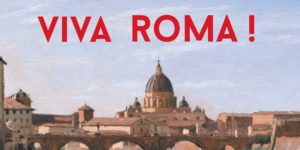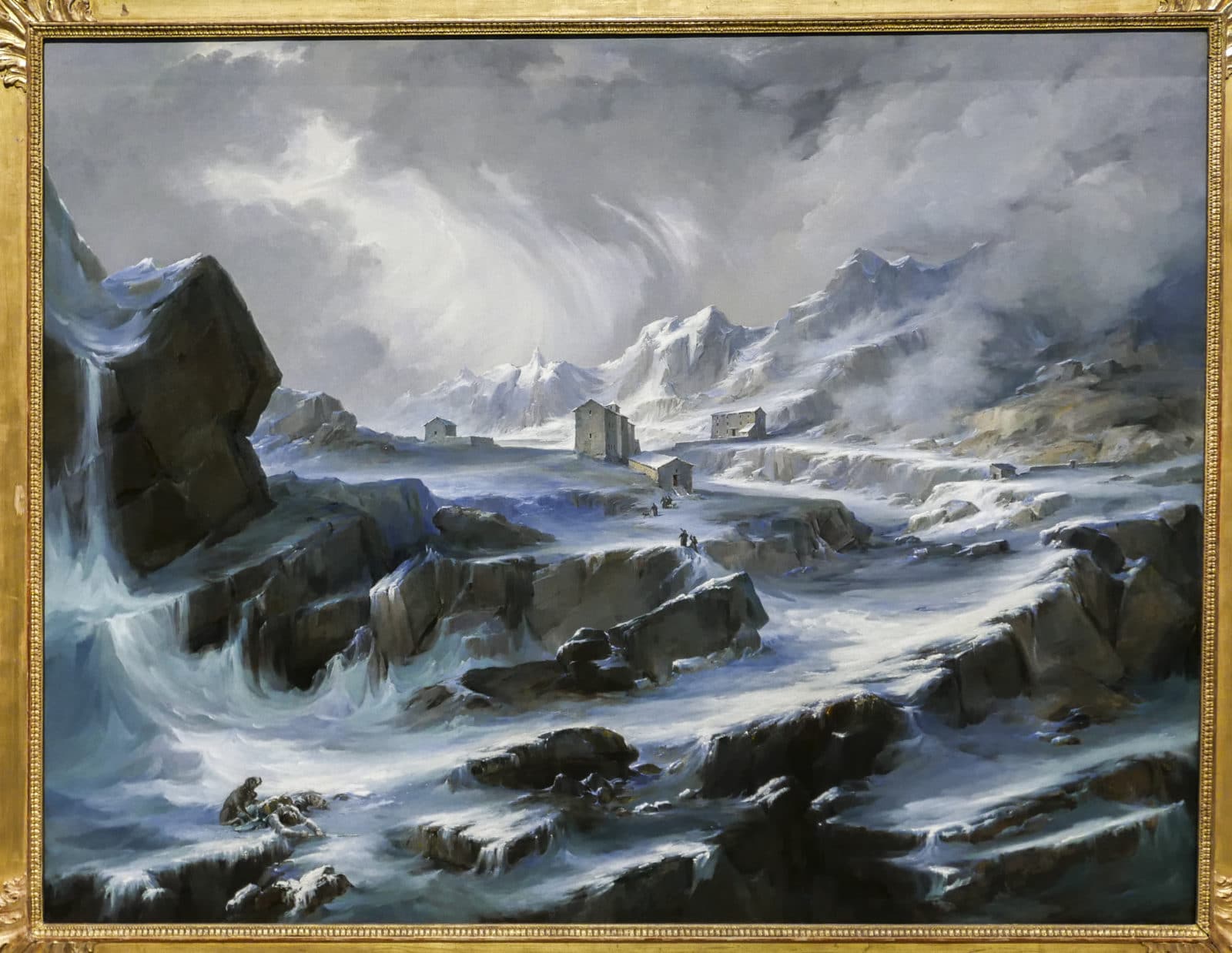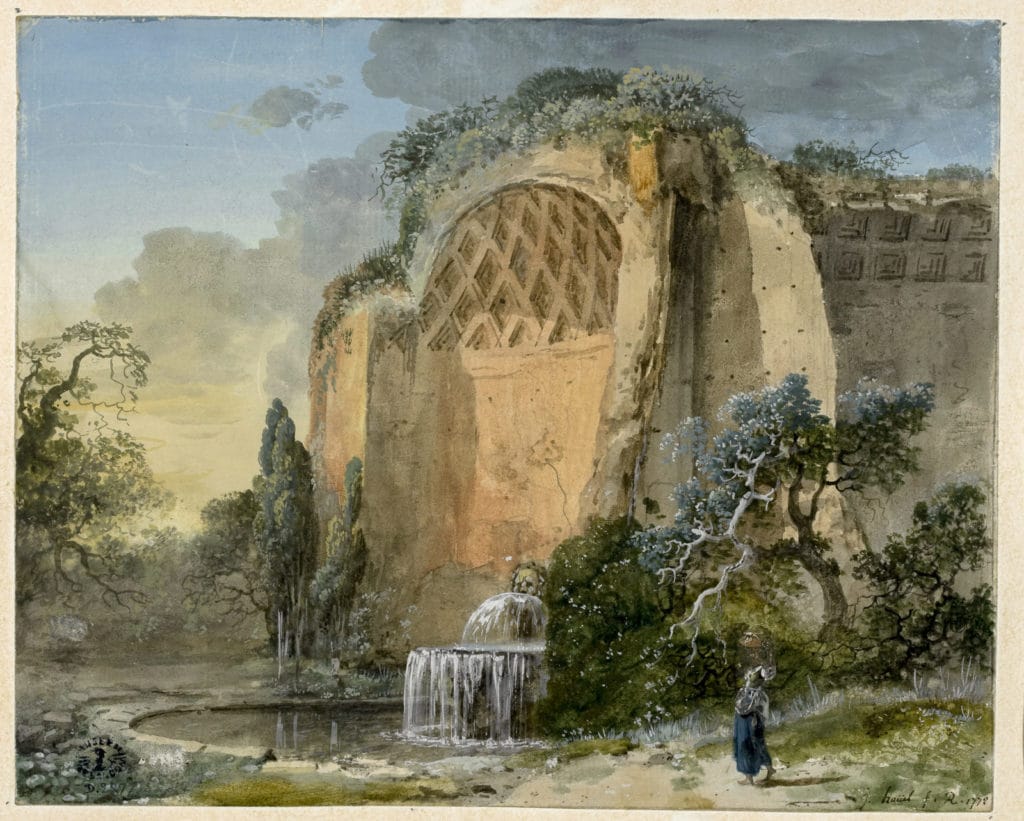Did you go to Rome before the 17the century then you were a pilgrim. If you went to Rome the following century then you were a searching artist. If you went from the 19the century to Rome then you were an honourable 'Tourist' on Grand Tour, seeking inspiration and moral uplift. Go to Rome anno 2018 then you are an Airbnb prole, a cultural predator with a pink roller case, trampling everything of value under its hooves in one weekend. At least when you are not, like you and me, travelling to work on your continuous aesthetic education. For all categories, the common denominator was and is the glowing obsession with the Eternal City, the Navel of the World, Gran Bella Città.
 La Boverie, Liege's museum of modern art - like many museums an example of neoclassicism - has thrown itself into 'The Journey to Rome'. Entitled Viva Roma!, it focuses on the relationships between (visiting) artists, residents and 'tourists' and the Roman sites where they met in 17th to the 20ste century central.
La Boverie, Liege's museum of modern art - like many museums an example of neoclassicism - has thrown itself into 'The Journey to Rome'. Entitled Viva Roma!, it focuses on the relationships between (visiting) artists, residents and 'tourists' and the Roman sites where they met in 17th to the 20ste century central.

In those centuries, a stay in Rome equalled an encounter with a desirable civilisation, its history and the resurgence of classical glory.
The 'gap year' of the 19th century
You had to go to Rome to grow as an artist and as a human being. You returned home - at least if you did not stay in Rome - with an eminent sense of taste, aesthetics and gastronomy that had great influence on the home front. Besides, the rich young people had a great time, nowadays we call it gap year.

La Boverie collected 175 works from the Louvre and around 50 other foreign institutions, including the Getty Museum of Los Angeles, the Museum of Fine Arts of San Francisco and the Copenhagen Thorvaldsen Museum. Rome through the eyes of European painters such as Corot, Panini, Ingres, Ensor and Bodinier, art lovers and collectors over the past three centuries. Through contact with Roman colleagues, their inspiration from classical art and their friendships, the artists developed their own style and a common culture.
A highwayman behind every cypress
Its exhibition at La Boverie is broken down into bite-sized chunks. Like The Journey to Rome. That was often a harsh journey across the Alps and northern Italy, where a highwayman could hide behind every cypress tree. Beloved themes. Like The Imitation of the Renaissance Masters or The Light in Rome (with Jean Baptiste Camille Corot's famous View of Rome). Otherwise, The inhabitants of Rome (laughing, drinking, loving, cheating, theatre) and The present day Rome.

All art disciplines participate. La Boverie cannot be broad enough (which unfortunately makes the flush a bit thin here and there). Fragments of famous Rome films like Gladiator, Ben Hur or Spartacus run continuously. But also older black-and-white films by the Lumière brothers, shot in Rome. The Spinario, the famous Boy with a thorn in his foot, a bronze statue from Roman antiquity, is also there. But in the form of a modern installation: the statue of the boy sits on a stretcher, a robotic machine removes the thorn from his foot.
Farmer played for crook
The weeks-long and sometimes gruelling journey to Rome centuries ago is, of course, a wonderful motif. This is depicted, among other things, by the icy passage of the Great St. Bernhard Pass, beginning 19the century. If you survived that one, scum lurked in northern Italy, beautifully depicted in a Marc Gabriel Charles Gleyre painting full of Roman bandits. Or Guillaume Bodinier La Vendetta (1825) dagger in hand, traveller on the ground, despite pleading woman. Barking bandits? The artists couldn't get enough of it once they arrived in Rome. Bandits did not much present themselves as models. That was solved by having a tough-looking peasant pose for a day, the romanticisation of the banditry.

Flower power time in Rome
One of the nicest categories is ruinism, also known as ruinism. This is the movement in which artists in the 18the and 19the century scenes with classical ruins painted, longing for the origins of Western civilisation. A romantic culture of paintings with scenes at the foot of Forum Romanum-like ruīnes emerged. Visions of men and women cosily seated on lumps of stone in divine orange-yellow evening light, eating, drinking and chatting, everyone seemed happy.
Romantic images from Rome that - as in the flower power era in San Francisco - lured many a native of northern countries to the Eternal City. Rome 'formatted' the Western world through its inspiring vitality. It dabbled in classical culture.

One of the most famous ruinists was Giovanni Paolo Pannini, the Italian painter and architect who had many followers, such as Hubert Robert, who brought the ruin motif to fruition in France. Ruin lust still exists: writer dezes went to the remains of Rome's aqueducts in 2015 for a historic picnic inspired by a scene from La Grande Bellezza. There were more 'tourists' under the arches, though. Many felt part of a grand classical beauty after two glasses of Barberani. 'The Romans had invented the bow,' said a colleague, 'and then they couldn't stop.'

Rome pulled like a magnet
Yep, the ancient capital of the Roman Empire drew like a magnet. Colosseum, Roman Forum, nearby Pompei, the palaces, the painters, the workshops, not to mention the sanguine Romans themselves. They brought an almost psychedelic sense of wonder to Europe.

INFORMATION
Viva Roma! can be visited from 25/04/2018 to 26/08/2018. La Boverie is open Tuesday to Sunday, from 10am to 6pm. Admission: €12.00. Address: Parc de la Boverie 3, Liège, laboverie.com

